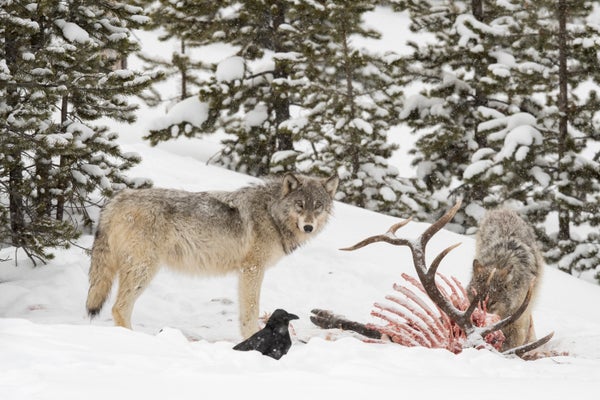This article was published in Scientific American’s former blog network and reflects the views of the author, not necessarily those of Scientific American
Have you found a probiotic supplement that works for you? Congratulations! You picked a winning lottery ticket.Likely by chance, you’ve stumbled on a probiotic that makes your gut microbiome work better for you. Many others have to buy ticket after ticket because we understand so little about how and why probiotics work.For those who have tried probiotics to solve gastrointestinal issues and failed, it’s surely a frustrating experience and one that could lead them to give up on the probiotics craze.
Probiotics can work. The problem is, that’s about as far as scientists have gotten.To understand how they work (or don’t), think of your gut as an ecosystem. Think back to your middle school biology lessons about food webs and consider Yellowstone National Park and its wolves as an example.
Back in January, news broke that the reintroduction of wolves to Yellowstone had caused an unexpected series of ecological changes.Wolves had been mostly absent from the park since the late 1920s. At the same time, the park’s beaverpopulation is resurging, in part because the wolves are impacting elk movement.
On supporting science journalism
If you're enjoying this article, consider supporting our award-winning journalism by subscribing. By purchasing a subscription you are helping to ensure the future of impactful stories about the discoveries and ideas shaping our world today.
Both beavers and elk eat willows.Without wolves, elk no longer needed to move out of river valleys for safety, and they devastated the beavers’ riverbank food source.Wolves are now putting elk back on the move and the willows have regrown, allowing the beavers to recover. The resurgent beavers, in turn, are causing many changes—even modifying the rivers’ flow paths—thanks to their dam building.
No one really expected the reintroduction of wolves to Yellowstone to cause this chain reaction, but before the wolves returned, scientists knew at least something about them and their role in ecosystems. They also knew a good bit about Yellowstone. Still, it will be decades before scientists fully understand the effect reintroduced wolves are having there.
Now, think of your gut as Yellowstone and probiotics as the wolves but as a park and group of wolves about which scientists know very little.The microbiomes of our gastrointestinal tracts are every bit as complex as the Yellowstone ecosystem, and each of our microbiomes is individual and unique. You might be Yellowstone, but your friend could beGrand Canyon National Park.We know some probiotics seem to help some people. But because we don’t know how they help, we can’t predict which microbial species or subspecies are right for which microbiome.
Humans can walk around in Yellowstone and the Grand Canyon and make observations with the naked eye. Everything in our guts happens at the microscopic level and smaller.We do know a fair amount about many of our gut bacteria, including what they like to eat and what they produce, through culturing them and sequencing their genomes. But we don’t really understand their higher-order behavior in the gut ecosystem, where many different species interact with one another and with us.
Compare this with knowing that willow-eating beavers live in Yellowstone but not knowing that beavers make dams or that Yellowstone has willow-loving elk.Then imagine deciding to introduce some wolves.You’re not sure which subspecies of the dozens of possible ones, but, hey, they’re wolves, how different could they be? Imagine doing this without knowing whether the wolves’ preferred food source exists in the park or even whether they’re carnivores or herbivores. Imagine not knowing whether Yellowstone’s climate is favorable to the wolves. How well do you think you could predict the outcome?
Choosing the right probiotics is perhaps even harderbecause of the significant variation at the genetic level, even within a single species(as much as 30 percent or more of the genome). As scientists conduct further research, we’ll start to figure out how probiotics work and why. Only then will it be possible to pick the right one, at least most of the time.
In the meantime, don’t give up on probiotics entirely. While scientists experiment, you can talk to your doctor and to a registered dietician to devise the best diet for you. Above all, eat lots of fiber—and get it from as many plant sources as you can—to feed the gut Yellowstone you already have.
